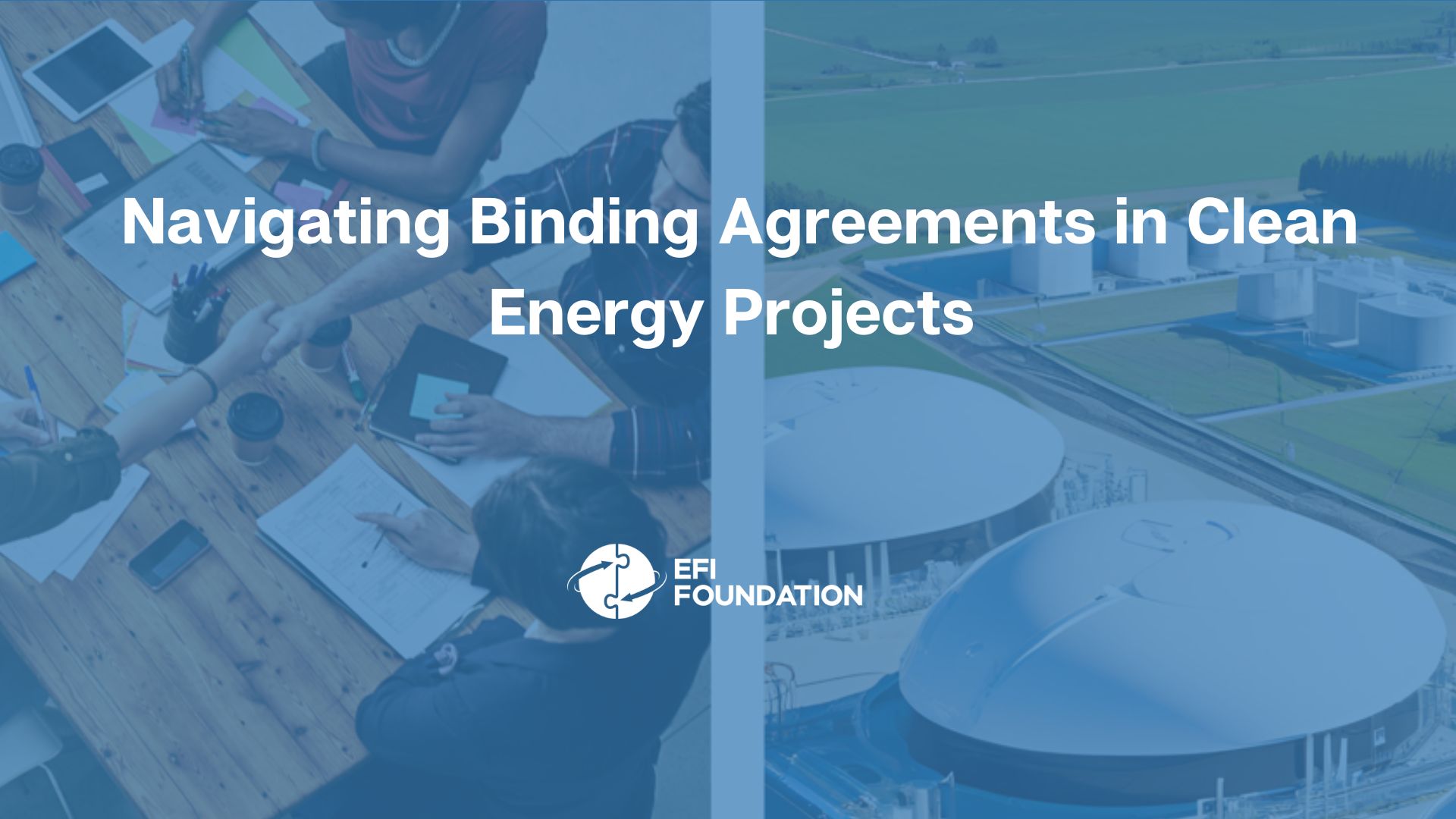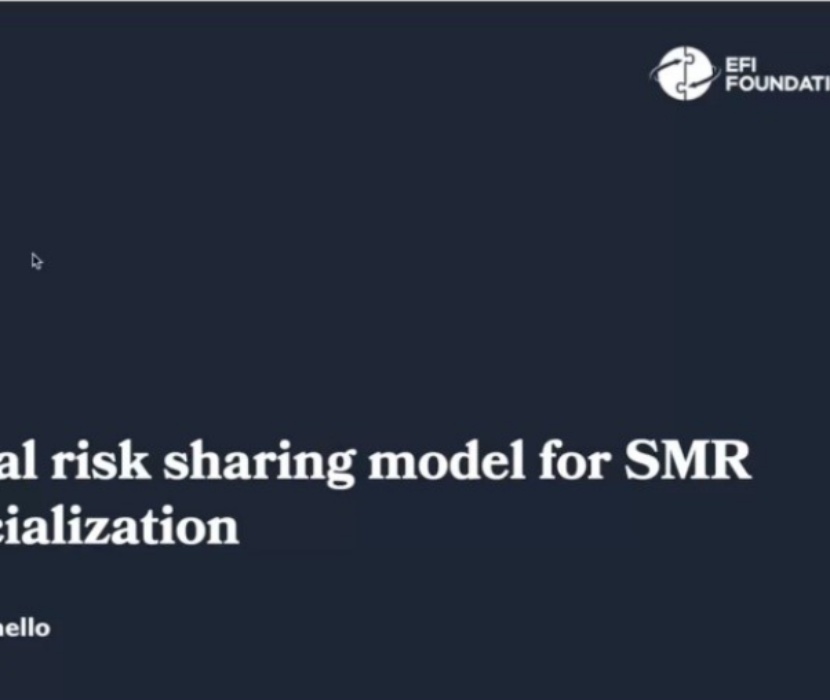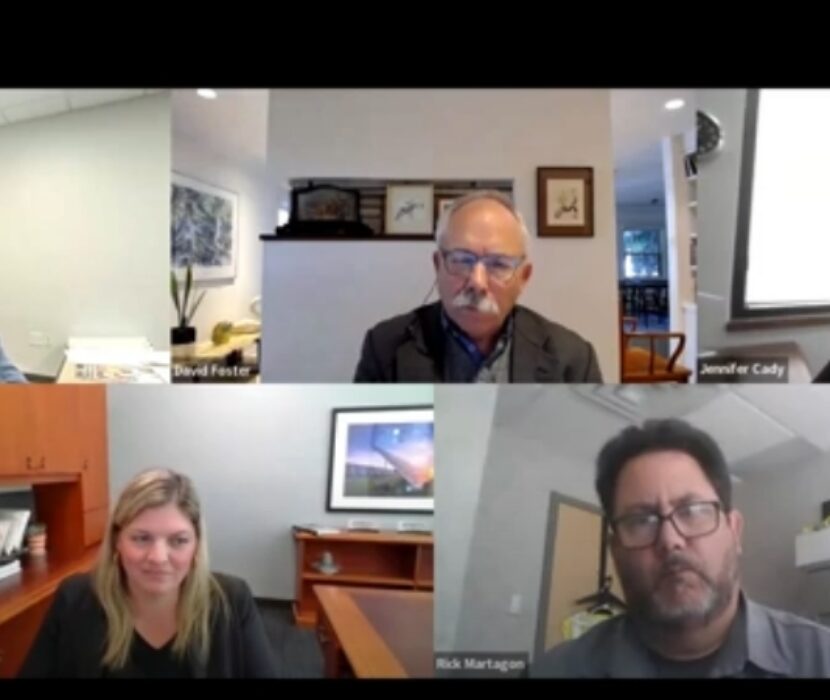
The U.S. Department of Energy’s (DOE’s) Hydrogen Hubs (H2Hubs) program allocated unprecedented investment in clean hydrogen projects across seven regional hubs. Each hub is expected to ultimately provide a range of regional benefits across different stages of development, including economic revitalization, local innovation, and jobs growth. As part of the process, DOE required each hub to draw up Community Benefits Plans (CBPs) that outline how the hubs intend to provide meaningful benefits to host communities.
To formalize the commitments made in CBPs, DOE and other stakeholders have taken an additional step by encouraging H2Hubs selectees to establish legally binding agreements with host communities. Empowering local representatives with an understanding of the binding agreements processes that support these regional developments is an essential component to enable more effective negotiations for both communities and clean energy developers.
The EFI Foundation (EFIF) recently hosted a conversation about our new guide that aims to demystify the process—Navigating the Negotiation: A Community Guide to Binding Agreements in Clean Energy. The report helps explain the various steps for negotiating binding agreements and provides procedural knowledge and expectations.
The virtual event brought together experts in legal negotiation and environmental justice to talk about their experiences navigating these kinds of agreements and explore how stakeholders can proactively prepare for the process so that all sides benefits from clean energy developments.
Sharon Lewis, Executive Director at the Connecticut Coalition for Environmental Justice, described instances where local communities were not aware of the scope of potential benefits they had omitted when signing similar agreements in the past. Lewis recommended writing Sankofa clauses—based on the Ghanaian principle of looking back to move forward—into future contracts as a means of avoiding this misstep. She also emphasized the need to understand how past agreements had been rendered in non-equitable terms to ensure future terms are negotiated fairly:
“It’s very important because in Connecticut, for example, with what we thought were successful binding agreements … we didn’t realize what we left behind. So, we need to have Sankofa clauses in all these binding agreements,” Lewis said.
Lewis also outlined past experiences with developers and liability concerns, and recommended accounting for and incorporating “liability insurance to make sure that in the event the developer leaves town or doesn’t do what they say … the community is protected and the benefits that they negotiated will continue on.”
Panelists also discussed how developers can meet with community representatives to build relationships based upon trust, especially when these communities have been subject to prior development negotiations that were exploitive.
Julian Gross, a San Francisco-based attorney and expert in contract negotiation, recommended that developers approach the table by recognizing, rather than attempting to conceal, existing power inequities. This could help remove mistrust-based roadblocks, especially when community representatives are given adequate legal counsel in advance.
“Developers who want to do a good thing can really start by saying ‘we recognize that right now we have the money, we have the federal policy backing, we have the statutory constraints to develop [and] communities often don’t even have an awareness of what’s going on. So let’s start by trying to equalize that power, and then go into a negotiation where we’re actually on equal footing and not going to move forward until everyone feels like they’re getting a good deal,’” Gross said.
Speakers noted that based on past experience, one of the biggest hesitancy points for those in rural areas emerges from apprehensions that outside developers will create binding agreements that disempower local communities. Annie Contractor, Policy Director at Rural Organizing, summarized this notion: “They’re supportive of renewable energy development, but generally folks just don’t want to get raked over the coals. They don’t want to feel like their power is taken away,” she said.
Contractor also outlined the importance of understanding the history of individual communities, especially in areas that have been marginalized and disinvested from, and explained that ensuring binding agreements foster investment and local prosperity will be vital for bringing these communities to the negotiating table.
“There are super remote communities, there are tribal communities, there are black belt communities that have been disinvested for decades, if not centuries. And so there are some really important differences in the history of energy development in each of these different types of communities. What those negotiations need to look like have to be different and responsive to the situation that they’re in,” Contractor said.
– Adam Patterson, Communications Associate
Watch the event recording: Navigating Binding Agreements in Clean Energy Projects.
Related Content
(Share this post with others.)





